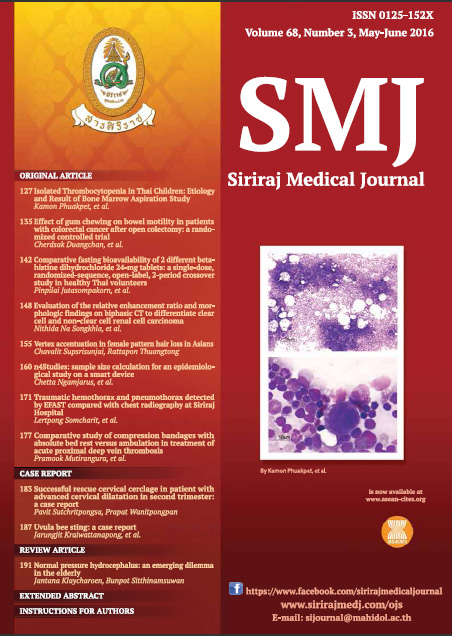Vertex Accentuation in Female Pattern Hair Loss in Asians
Keywords:
Female pattern hair loss, vertex accentuationAbstract
Background: The most common cause of hair loss seen in women is female pattern hair loss (FPHL), also known as female androgenetic alopecia. It affects the central part of the scalp but spares the frontal hairline. Frontal accentuation was also described by Olsen. In Asian women, vertex thinning patterns are frequently developed, but there has been no report about vertex thinning pattern in female pattern hair loss.
Objective: To find a prevalence of vertex accentuation in female pattern hair loss (FPHL) in Asian women.
Methods: Scalp hair counting (n/cm2) were measured at 3 different areas; vertex, mid scalp, and frontal area respectively by digital dermoscopy (Dino digital AM-413T). Visual counting and photography were performed. Outcomes were evaluated by gross appearance of vertex thinning and/or hair density <120 /cm2 in any of 3 areas.
Results: 143 patients were evaluated. Mean age was 45.54 years. Of the hair loss type, 36.4% were mid-scalp, 33.6% were vertex accentuation and 30.1% were frontal accentuation, respectively. Age was not significantly different among the 3 types of hair loss (P- value 0.859).
Conclusion: Although the most common female pattern hair loss type is a diffuse type (Ludwig type), vertex accentuation pattern is the second most common pattern in this study. This study is the first to mention “Vertex accentuation” to be another pattern for FPHL.
Downloads
Published
How to Cite
Issue
Section
License
Authors who publish with this journal agree to the following conditions:
Copyright Transfer
In submitting a manuscript, the authors acknowledge that the work will become the copyrighted property of Siriraj Medical Journal upon publication.
License
Articles are licensed under a Creative Commons Attribution-NonCommercial-NoDerivatives 4.0 International License (CC BY-NC-ND 4.0). This license allows for the sharing of the work for non-commercial purposes with proper attribution to the authors and the journal. However, it does not permit modifications or the creation of derivative works.
Sharing and Access
Authors are encouraged to share their article on their personal or institutional websites and through other non-commercial platforms. Doing so can increase readership and citations.











